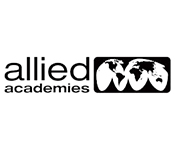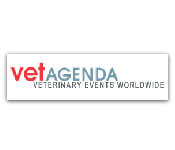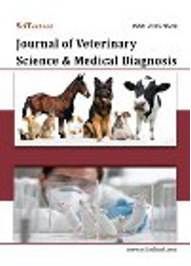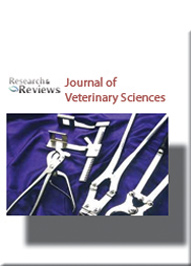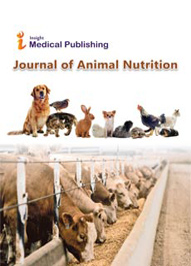Theme: New Roadmap for Veterinary Education
Veterinary Summit 2016
Track 1: Veterinary
Veterinary research includes studies on prevention, control, diagnosis, and treatment of diseases and on the basic biology and welfare of animals. It transcends species boundaries to include the study of spontaneous and experimental models of both human and animal disease and research at important human-animal interfaces, such as food safety, wildlife and ecosystem health, zoonotic diseases, and public policy. Veterinary research serves as the interface of basic science and animal and human health that is critical to the advancement of our understanding of and response to impending risks and to the exploitation of disciplinary advances in the pursuit of One Medicine. The urgent need to provide adequate resources for investigators, training programs, and facilities involved in veterinary research must be met to seize the opportunities to improve the well-being of humans and animals and to minimize risks to their health.
Related Conferences:
3rd International Veterinary Congress, August 18-20, 2016, London, UK; International Dairy Conference, June 30-July 02, 2016, New Orleans, USA; 4th Animal Health and Veterinary Medicine Congress, Sep 29-Oct 1, 2016, Valencia, Spain; 2nd International Conference on Livestock Nutrition, July 21-22, 2016, Brisbane, Australia; Veterinary Vaccinology Network Conference, January 5-6, 2016, Manchester, UK; The North American Veterinary Community Conference, January 16-20, 2016, Orlando, Florida, USA; 1st Annual International Conference on Veterinary and Animal Science, December 15-16, 2016, Colombo, Sri Lanka; Pacific Veterinary Conference, June 23-26, 2016, San Francisco, USA; 13th Egyptian Society Cattle Diseases Conference, February 1-4, 2016, Hurghada, Egypt
Related Societies:
The North American Veterinary Community, USA; Belgian Veterinary Computer Association, Belgium; Czech Academy of Agricultural Sciences, Czech Republic; Hellenic Veterinary Medical Society, Greece; Slovak Small Animal Veterinary Association, Slovakia; House Rabbit Society, Australia; Laboratory Animal Science Association, UK; Austrian Small Animal Veterinary Association, Austria; World Equine Veterinary Association, Brazil; Irish Veterinary Acupuncture Society, Ireland
Track 2: Poultry Science
Poultry is a term used for any kind of domesticated bird, captive-raised for its utility, and traditionally the word has been used to refer to wildfowl and waterfowl "Poultry" can be defined as domestic fowls, including chickens, turkeys, geese and ducks, raised for the production of meat or eggs and the word is also used for the flesh of these birds used as food. Worldwide, more chickens are kept than any other type of poultry, with over 50 billion birds being raised each year as a source of meat and eggs. Profitability of production depends very much on the price of feed, which has been rising. High feed costs could limit further development of poultry production. Poultry is the second most widely eaten type of meat in the world, accounting for about 30% of total meat production worldwide compared to pork at 38%. Sixteen billion birds are raised annually for consumption, more than half of these in industrialized, factory-like production units. Global broiler meat production rose to 84.6 million tons in 2013. The largest producers were the United States (20%), China (16.6%), Brazil (15.1%) and the European Union (11.3%).Poultry meat and eggs provide nutritionally beneficial food containing protein of high quality. A 2011 study by the Translational Genomics Research Institute showed that 47% of the meat and poultry sold in United States grocery stores was contaminated with Staphylococcus aureus, Salmonella and Campylobacter. Poultry Products may become contaminated by these bacteria during handling, processing, marketing, or storage, resulting in food-borne illness if the product is improperly cooked or handled.
Related Conferences:
3rd International Veterinary Congress, August 18-20, 2016, London, UK; International Dairy Conference, June 30-July 02, 2016, New Orleans, USA; 4th Animal Health and Veterinary Medicine Congress, Sep 29-Oct 1, 2016, Valencia, Spain; 2nd International Conference on Livestock Nutrition, July 21-22, 2016, Brisbane, Australia; Avian Model Systems 9: A New Integrative Platform, March 28-31, 2016, Taipei, Taiwan; World Poultry Science Association Spring Meeting, April 6-7, 2016, Chester, UK; Poultry Science Association Annual Meeting, July 11-14, 2016, Louisiana, USA; World's Poultry Congress 2016, September 5-9, 2016, Beijing, China; 9th International Poultry Conference, November 7-10, 2016, Hurghada, Egypt
Related Societies:
Australian Society for Veterinary Pathology, Australia; American Ferret Association, USA; Ukrainian Small Animals Veterinary Association, Ukraine; Veterinary Nurses Association of South Africa, South Africa; Singapore Veterinary Association, Singapore; Irish Veterinary Acupuncture Society, Ireland; Japanese Society of Veterinary Science, Japan; Netherlands Association of Companion Animal Medicine, Netherlands; Veterinary Cancer Society, Canada; Finnish Veterinary Association, Finland
Track 3: Veterinary Economics
The Veterinary Services industry is labor intensive. In 2015, wage costs are comprised of 36.6% of industry revenue, compared with depreciation costs accounting for 2.3%. For every dollar spent on wages, the industry incurs an estimated $0.06 in capital costs. All areas of operation of an animal hospital require a significant input of knowledge and skill. There is a high level of hands-on care required in diagnosing and treating animals. Veterinarians are well educated and possess a high level of skill, which results in elevated wage costs. Support is required in the areas of registering the animal on arrival at the hospital and receiving payments as well as taking samples, exercising, feeding, grooming and cleaning animals.
Related Conferences
3rd International Veterinary Congress, August 18-20, 2016, London, UK; International Dairy Meet & Expo, June 30-July 02, 2016, New Orleans, USA; 4th Animal Health and Veterinary Medicine Congress, Sep 29-Oct 1, 2016, Valencia, Spain; 2nd International Conference on Livestock Nutrition, July 21-22, 2016, Brisbane, Australia; Veterinary Economics Hospital Design Conference, August 24-26, 2016, Kansas City, Missouri, USA; The North American Veterinary Community Conference, January 16-20, 2016, Orlando, Florida, USA; 18th International Conference on Animal Science and Veterinary Medicine, August 25-26, 2016, London, UK; Pacific Veterinary Conference, June 23-26, 2016, San Francisco, USA; 48th Annual Bovine Practitioners Conference, September 15-17, Charlotte, N.C., USA
Related Societies:
Veterinary Council of New Zealand, New Zealand; British Veterinary Association, UK; Japanese Society of Veterinary Science, Japan; Swedish Society of Veterinary Medicine, Sweden; Slovak Small Animal Veterinary Association, Slovakia; Irish Companion Animal Veterinary Association, Ireland; Societa' Italiana Veterinari per Equini, Italy; Scandinavian Society for Laboratory Animal Science, Norway; Serbian Association of Small Animal Practitioners, Serbia and Montenegro; Hellenic Veterinary Medical Society, Greece
Track 4: Animal Nutrition & Physiology
The Global veterinary healthcare market, estimated at $24.8 Billion in 2014, is set to reach $34.39 Billion by 2019, with a CAGR of 7.86% over the forecast period. Veterinary healthcare market is gaining importance as a result of manufacturers focus on production of products with specialized formulations and specialized manufacturing processes. In United States alone, Americans spent more than $53 billion on food, pet supplies, over-the-counter and prescription medications, veterinary care, live animal purchases, dietary supplements and other pet-related services. Increased love for the pets leading to increased ownership, more people awareness for animal health, and far less requirements for animal health drugs approval are the major driving factors for the market. Another factor that drives the market is continuous innovations and technological advances in development of animal health drugs. However, increased competition for cultivated land and scarcity of arable land are the major restraints for the market growth. The new type of diseases in animals and their subsequent transfer to humans via animal feed quality consumption and companionship are escalating the veterinary healthcare industry globally. The strategic decisions in research and development of manufacturers are expected to positively impact global veterinary healthcare market.
Related Conferences
3rd International Veterinary Congress, August 18-20, 2016, London, UK; International Dairy Conference, June 30-July 02, 2016, New Orleans, USA; 4th Animal Health and Veterinary Medicine Congress, Sep 29-Oct 1, 2016, Valencia, Spain; 2nd International Conference on Livestock Nutrition, July 21-22, 2016, Brisbane, Australia; 7th FIAAP Animal Nutrition Conference, March 29, 2016, Bangkok, Thailand; Pacific Northwest Animal Nutrition Conference, January 18-19, 2016, Illinois, USA; Mid-Atlantic Nutrition Conference, March 23-24, 2016, Maryland, USA; 67th Annual Meeting of the European Federation of Animal Science, August 29-September 02, 2016, Belfast, UK; 1st Annual International Conference on Veterinary and Animal Science, December 15-16, 2016, Colombo, Sri Lanka
Related Societies:
Serbian Association of Small Animal Practitioners, Serbia and Montenegro; American Ornithologists' Union, USA; Danish Small Animal Veterinary Association, Denmark; Finnish Society of Veterinary Ophthalmology, Finland; The North American Veterinary Community, USA; American Ferret Association, USA; Ukrainian Small Animals Veterinary Association, Ukraine; Australian Society for Veterinary Pathology, Australia; Association of British Veterinary Acupuncture, UK; Swedish Society of Veterinary Medicine, Sweden
Track 5: Veterinary Biochemistry
Biochemistry is closely related to molecular biology, the study of the molecular mechanisms by which genetic information encoded in DNA is able to result in the processes of life. Depending on the exact definition of the terms used, molecular biology can be thought of as a branch of biochemistry, or biochemistry as a tool with which to investigate and study molecular biology. Biochemistry is one of the few basic sciences where animal and plant kingdoms meet. In veterinary education and research, biochemistry is highly relevant to the metabolism and functions of animals in health and disease, and forms the basis for an intelligent understanding of major aspects of veterinary science and animal husbandry. Hence the need for adequate recognition of the place of biochemistry in veterinary education cannot be over emphasized. It is only the possession of a fairly high level of knowledge of biochemistry that will enable one to study, or to pursue a line of research, intelligently in applied sciences such as animal nutrition, dairy science, pharmacology, animal physiology, animal genetics, clinical pathology, medicine and so on. In the absence of grounding in biochemistry, it is difficult to obtain an insight into these subject areas.
Related Conferences:
3rd International Veterinary Congress, August 18-20, 2016, London, UK; International Dairy Meet & Expo, June 30-July 02, 2016, New Orleans, USA; 4th Animal Health and Veterinary Medicine Congress, Sep 29-Oct 1, 2016, Valencia, Spain; 2nd International Conference on Livestock Nutrition, July 21-22, 2016, Brisbane, Australia; Federation of Asian Small Animal Veterinary Association Congress, April 18-21, 2016, Kuala Lumpur, Malaysia; American Veterinary Medical Association Annual Convention, August 05-09, 2016, San Antonio, USA; 12th European Wildlife Disease Association Conference, August 29- September 02, 2015, Berlin, Germany; 48th Annual Bovine Practitioners Conference, September 15-17, Charlotte, N.C., USA; 1st Annual International Conference on Veterinary and Animal Science, December 15-16, 2016, Colombo, Sri Lanka
Related Societies:
Nordic Society for Veterinary Epidemiology, Iceland; Societa' Italiana Veterinari per Equini, Italy; Danish Small Animal Veterinary Association, Denmark; Scandinavian Society for Laboratory Animal Science, Norway; American Ferret Association, USA; Hungarovet, Hungary; Veterinary Nurses Association of South Africa, South Africa; Belgian Veterinary Computer Association, Belgium; Polish Society of Veterinary Science, Poland; Finnish Veterinary Association, Finland
Track 6: Dairy Technology
The global dairy herd management market was valued at $823.65 million in 2013 and is expected to reach $1,511.91 million by 2018, at a CAGR of 12.92% between 2013 and 2018. Dairy cattle management products are rapidly gaining widespread acceptance in the dairy industry primarily due to the increased demand for dairy products. Furthermore, use of these automated herd management techniques offers substantial cost advantages over traditional techniques. Dairy herd management products serve to improve production efficiency, lower labor costs, and help in planning and managing milking, feeding, vaccination, and insemination schedules for large herds.
Related Conferences:
3rd International Veterinary Congress, August 18-20, 2016, London, UK; International Dairy Conference, June 30-July 02, 2016, New Orleans, USA; 4th Animal Health and Veterinary Medicine Congress, Sep 29-Oct 1, 2016, Valencia, Spain; 2nd International Conference on Livestock Nutrition, July 21-22, 2016, Brisbane, Australia; Conference on Precision Dairy Farming, June 21-23, 2016, Leeuwarden, Netherlands; 44th Dairy Industry Conference, February 18-20, 2016, Haryana, India; 18th International Conference on Animal and Dairy Sciences, May 19-20, 2016, Berlin, Germany; 2016 ADPI/ABI Annual Conference, April 24-26, 2016, Chicago-IL, USA; The Ice Cream Expo 2016, February 16-18, Yorkshire, UK
Related Societies:
Austrian Small Animal Veterinary Association, Austria; Nordic Society for Veterinary Epidemiology, Iceland; Societa' Italiana Veterinari per Equini, Italy; Finnish Society of Veterinary Ophthalmology, Finland; Scandinavian Society for Laboratory Animal Science, Norway; Hungarovet, Hungary; Polish Society of Veterinary Science, Poland; Netherlands Association of Companion Animal Medicine, Netherlands; General Association of Veterinary Surgeons in Romania, Romania; Finnish Veterinary Association, Finland
Track 7: Veterinary Epidemiology
Veterinary epidemiology deals with the investigation of diseases, productivity and animal welfare in populations. It is used to describe the frequency of disease occurrence and how disease, productivity and welfare are affected by the interaction of different factors or determinants. This information is then used to manipulate such determinants in order to reduce the frequency of disease occurrence. Veterinary epidemiology is a holistic approach aimed at coordinating the use of different scientific disciplines and techniques during an investigation of disease or impaired productivity or welfare. One of its essential foundations is the collection of data, which then has to be analyzed using qualitative or quantitative approaches in order to formulate causal hypotheses. As part of the quantitative approach to epidemiological analysis, epidemiological investigations involving field studies or surveys are being conducted and models of epidemiological problems can be developed. The ultimate goal is to control a disease problem, reduce productivity losses and improve animal welfare.
Related Conferences:
3rd International Veterinary Congress, August 18-20, 2016, London, UK; International Dairy Conference, June 30-July 02, 2016, New Orleans, USA; 4th Animal Health and Veterinary Medicine Congress, Sep 29-Oct 1, 2016, Valencia, Spain; 2nd International Conference on Livestock Nutrition, July 21-22, 2016, Brisbane, Australia; The North American Veterinary Community Conference, January 16-20, 2016, Orlando, Florida, USA; 18th International Conference on Animal Science and Veterinary Medicine, August 25-26, 2016, London, UK; The 13th Conference of The Egyptian Society For Cattle Diseases, February 1-4, 2016, Hurghada, Egypt; SVEPM 2016, March 16-18, 2016, Elsinore, Denmark; 18th International Conference on Veterinary Ethics and Epidemiology, April 8-9, 2016, Dubai, UAE
Related Societies:
Belgian Veterinary Computer Association, Belgium; Czech Academy of Agricultural Sciences, Czech Republic; Austrian Small Animal Veterinary Association, Austria; Hellenic Veterinary Medical Society, Greece; Nordic Society for Veterinary Epidemiology, Iceland; World Equine Veterinary Association, Brazil; Laboratory Animal Science Association, UK; Swedish Society of Veterinary Medicine, Sweden; Association of Practicing Veterinary Surgeons, Russia; Association of British Veterinary Acupuncture, UK
Track 8: Animal breeding
Animal breeding is a branch of animal science that addresses the evaluation of the genetic value of livestock. Selecting for breeding animals with superior EBV in growth rate, egg, meat, milk, or wool production, or with other desirable traits has revolutionized livestock production throughout the world. It is the management and care of farm animals by humans for profit, in which genetic qualities and behavior, considered to be advantageous to humans, are further developed. The term can refer to the practice of selectively breeding and raising livestock to promote desirable traits in animals for utility, sport, pleasure, or research. Breeding techniques such as artificial insemination and embryo transfer are frequently used today, not only as methods to guarantee that females breed regularly but also to help improve herd genetics. On the one hand, this improves the ability of the animals to convert feed to meat, milk, or fiber more efficiently, and improve the quality of the final product. On the other, it decreases genetic diversity, increasing the severity of certain disease outbreaks among other risks.
Related Conferences:
3rd International Veterinary Congress, August 18-20, 2016, London, UK; International Dairy Conference, June 30-July 02, 2016, New Orleans, USA; 4th Animal Health and Veterinary Medicine Congress, Sep 29-Oct 1, 2016, Valencia, Spain; 2nd International Conference on Livestock Nutrition, July 21-22, 2016, Brisbane, Australia; CenCan Conference, February 05-07, 2016, Manitoba, Canada; Virginia Veterinary Conference, February 25-27, 2016, Virginia, USA; Oregon Veterinary Conference, March 04-06, 2016, Corvallis, USA; Pacific Veterinary Conference, June 23-26, 2016, San Francisco, USA; Emerald Coast Veterinary Conference, June 01-05, 2016, Florida, USA
Related Societies:
Canadian Veterinary Medical Association, Canada; Laboratory Animal Science Association, UK; American Veterinary Medical Association, USA; World Equine Veterinary Association, Brazil; The North American Veterinary Community, USA; Singapore Veterinary Association, Singapore; Hungarovet, Hungary; Netherlands Association of Companion Animal Medicine, Netherlands; Finnish Society of Veterinary Ophthalmology, Finland; Swedish Society of Veterinary Medicine, Sweden
Track 9: Ornithology
Ornithology is a branch of zoology that concerns the study of birds. Several aspects of ornithology differ from related disciplines, due partly to the high visibility and the aesthetic appeal of birds. Most marked among these is the extent of studies undertaken by amateurs working within the parameters of strict scientific methodology. The science of ornithology has a long history and studies on birds have helped develop several key concepts in evolution, behavior and ecology such as the definition of species, the process of speciation, instinct, learning, ecological niches, guilds, island biogeography, phylogeography and conservation. While early ornithology was principally concerned with descriptions and distributions of species, ornithologists today seek answers to very specific questions, often using birds as models to test hypotheses or predictions based on theories.
Related Conferences:
3rd International Veterinary Congress, August 18-20, 2016, London, UK; International Dairy Conference, June 30-July 02, 2016, New Orleans, USA; 4th Animal Health and Veterinary Medicine Congress, Sep 29-Oct 1, 2016, Valencia, Spain; 2nd International Conference on Livestock Nutrition, July 21-22, 2016, Brisbane, Australia; 2nd World Seabird Conference, October 26-30, 2015, Cape Town, South Africa; Natural Areas Conference, November 03-05, 2016, Arkansas, USA; Raptor Research Foundation Conference, November 04-08, 2015, California, USA; 6th North American Ornithological Conference, August 16-21, 2016, Washington DC, USA; 4th International Albatross and Petrel Conference, September 01, 2016, Barcelona, Spain
Related Societies:
Slovak Small Animal Veterinary Association, Slovakia; Swedish Society of Veterinary Medicine, Sweden; Association of Veterinary Technicians in Turkey, Turkey; Association of British Veterinary Acupuncture, UK; The North American Veterinary Community, USA; Finnish Society of Veterinary Ophthalmology, Finland; Irish Companion Animal Veterinary Association, Ireland; Austrian Small Animal Veterinary Association, Austria; New Zealand Veterinary Nursing Association Ltd, New Zealand; Japanese Society for Laboratory Animal and Environment, Japan
Track 10: Veterinary Surgery & Radiology
Veterinary surgery is surgery performed on animals by veterinarians, which are categorized into three broad categories: orthopedics (bones, joints, muscles), soft tissue surgery (skin, body cavities, cardiovascular system, GI/urogenital/respiratory tracts), and neurosurgery. Advanced surgical procedures such as joint replacement (total hip, knee and elbow replacement), fracture repair, stabilization of cranial cruciate ligament deficiency, oncologic (cancer) surgery, herniated disc treatment, complicated gastrointestinal or urogenital procedures, kidney transplant, skin grafts, complicated wound management, minimally invasive procedures such as arthroscopy, laparoscopy, thoracoscopy, etc. The goal of veterinary surgery may be quite different in pets and in farm animals. In the former, situation is a bit like in human beings, and more and more complex operations are performed, with sophisticated anesthesia techniques. In the latter, the cost of the operation must not exceed the economic benefit in surgically treating the illness. Whereas Radiology is a medical specialty that uses imaging to diagnose and treat diseases seen within the body. Radiologists use a variety of imaging techniques such as X-ray radiography, ultrasound, computed tomography (CT), nuclear medicine including positron emission tomography (PET), and magnetic resonance imaging (MRI) to diagnose and/or treat diseases.
Related Conferences:
3rd International Veterinary Congress, August 18-20, 2016, London, UK; International Dairy Conference, June 30-July 02, 2016, New Orleans, USA; 4th Animal Health and Veterinary Medicine Congress, Sep 29-Oct 1, 2016, Valencia, Spain; 2nd International Conference on Livestock Nutrition, July 21-22, 2016, Brisbane, Australia; Practical Techniques in Soft tissue and Orthopedic Surgery, December 04-06, 2015, Las Vegas, USA; Intensive Abdominal Ultrasound, December 11-13, 2015, Las Vegas, USA; Oregon Veterinary Conference, March 04-06, 2016, Corvallis, USA; Pacific Veterinary Conference, June 23-26, 2016, San Francisco, USA; European Veterinary Diagnostic Imaging, August 30- September 03, 2016, Wroclaw, Poland
Related Societies:
Austrian Small Animal Veterinary Association, Austria; Association of Practicing Veterinary Surgeons, Russia; Danish Small Animal Veterinary Association, Denmark; Finnish Society of Veterinary Ophthalmology, Finland; The North American Veterinary Community, USA; Hungarovet, Hungary; Irish Companion Animal Veterinary Association, Ireland; Netherlands Association of Companion Animal Medicine, Netherlands; Polish Small Animal Veterinary Association, Poland; Finnish Veterinary Association, Finland
Track 11: Entrepreneurs Investment Meet
Veterinary Summit provides a global platform to connect Entrepreneurs, Proposers and the Investors worldwide. It's intended to create and facilitate the most optimized and viable business meeting place for engaging people in constructive discussions, evaluation and execution of promising business ideas. Through this event, an investor could be able to find out the highest potential investment opportunities in veterinary sector, which provides good return on investment. For entrepreneurs, this would be an ideal place to find out suitable investors and partners to start or expand their business.
We encourage Entrepreneurs, Business Owners, Early Stage Companies and Established Corporates to connect with National or International Angel Investors, Venture Capital Firms, Venture Capital Sources, Investment Funds, Investment Banks, Corporate Investors and Potential Business Partners.
Veterinary Summit welcomes participants, visitors, delegates and exhibitors from all over the world to the wonderful city of Atlanta, United States. ConferenceSeries Ltd organizes 3000+ events inclusive of 600+ Conferences, 1200+ Workshops and 1200+ Symposiums on various topics of Science & Technology across the globe with support from 1000 more scientific societies. ConferenceSeries Ltd also publishes 700+ Open Access Journals which contains over 50000 eminent personalities and reputed scientists as editorial board members.
Veterinary Science is the science of diagnosing, treating and curing the diverse types of diseases in birds and animals. The subject broadly covers the study of animal physiology, treatment and prevention of diseases among animals. The basic principles of this specialized branch of study are quite similar to that of human medical sciences. But the job profile of a veterinary doctor or a vet is much more than that of a general physician or a surgeon. It involves not only taking care of animal health but also includes scientific breeding and handling of livestock.
Veterinary education is the tertiary education of veterinarians. The provision of high quality veterinary education is key to equipping potential veterinarians with the necessary knowledge to perform efficiently and to support Veterinary Services effectively. In numerous countries, however, notably in many developing and in-transition countries, the quality of veterinary education is failing to meet the requirements for delivering highly competent Veterinary Services. This has therefore highlighted the need for veterinary education to be strengthened, with particular emphasis on establishing minimum competencies and harmonising key curriculum elements to facilitate international mobility of veterinarians.
The scope for veterinarians in the future is bright. As keeping pets is becoming a fad now, the demand for private veterinary clinics is on the rise in metropolitan cities. And similarly, there has been an unprecedented growth in the poultry sector and animal products technology sector, resulting in an increased demand for veterinarians in different sectors of livestock and poultry.
We look forward to welcome you all in Atlanta, USA.
Veterinary field is one of the fastest growing in the United States. Demand for new treatments such as hip replacements, blood transfusions and cancer treatments are helping to drive the increase. Veterinarian job growth is expected to increase 27.6% in 2016. While the veterinary care industry is growing, it’s the technician and technologist positions that are projected to have the largest increase in the next two years. Job growth for veterinary technologists and technicians is expected to increase by 41% in 2016. The US Bureau of Labor Statistics says this is because pet owners are becoming more affluent while the number of pets continues to grow, so technologists and technicians able to provide specialized services will continue to be in demand.
The ability to provide veterinary services begins in the market for veterinary education, the source of labor in the veterinary markets’ supply chain. Veterinary education is provided by U.S. accredited domestic and foreign schools as well as non-U.S. accredited foreign schools. These schools are both non-profit and for-profit institutions. For the 28 U.S. veterinary colleges the average fees have increased from $10,549 to $25,017 between 1999 and 2014.
In 2014, an estimated 100,137 veterinarians were actively practicing veterinary medicine in the United States. The market for veterinarians is comprised of multiple, horizontally related markets. Veterinarians have numerous employment options upon graduation, including private practice (e.g. companion animal, food animal, mixed animal, equine), public practice (e.g. university, government, uniformed services), industry and non-profits. In 2014, an estimated 100,137 veterinarians were actively practicing veterinary medicine in the United States. The largest share of veterinarians was employed in companion animal medicine (66.5 percent). The remaining share of veterinarians practice in university and colleges (6.3 percent), food animal medicine (6.1 percent), equine medicine (4.4 percent) and mixed animal medicine (3.9 percent).

Figure 1: Funding in Veterinary Research
The outlook is improving for the veterinary profession. For the next two years, the growth rate of U.S. gross domestic product is projected to increase to 3.4 percent, which will improve the financial picture for veterinary practices. The veterinary education market is at, or very near, equilibrium. Historically, the demand for education has exceeded the supply, so that the supply of new veterinarians is equal to the number of available seats. However, the cost of veterinary education is forecast to rise faster than the rate of increase in veterinary compensation, so at some point the higher priced seats will likely be left vacant. This will result in constant class sizes of new veterinarians from 2018-2025. On the other hand, the market for veterinarians is not in equilibrium. The level of compensation offered to new veterinarians is not sufficient to provide a positive return on educational investment despite low unemployment, a negative underemployment rate, and an increasing proportion of veterinary practices working at full capacity. With constant class sizes forecast for 2018-2025 and a growing number of pets over the same period, the forecast for excess capacity in the market for veterinary services will decline, reaching a low of 6 percent.
Funding Agencies in USA:
- Alpaca Research Foundation
- Alternatives Research and Development Foundation
- American College of Veterinary Internal Medicine Foundation
- American Veterinary Medical Foundation
- Morris Animal Foundation
- National Association of Animal Breeders
- National Institutes of Health
- National Science Foundation
- Ohio Animal Health Foundation
- Pharmaceutical Research and Manufacturers of America Foundation, Inc.
- Sandler Family Supporting Foundation
- US Department of Agriculture
- Whitaker Foundation
Scope and Importance:
Veterinary research includes research on prevention, control, diagnosis, and treatment of diseases of animals and on the basic biology, welfare, and care of animals. Veterinary research transcends species boundaries and includes the study of spontaneously occurring and experimentally induced models of both human and animal disease and research at human-animal interfaces, such as food safety, wildlife and ecosystem health, zoonotic diseases, and public policy. Veterinary research has the potential to immensely impact the fields of comparative medicine, public health and food safety, and animal health; but its ability to reach its potential relies on adequate infrastructural, financial, and human resources.
Veterinary research has the potential to immensely impact the fields of comparative medicine, public health and food safety, and animal health; but its ability to reach its potential relies on adequate infrastructural, financial, and human resources. Veterinary research has evolved to address societal changes. Companion animals play a central role in the quality of life of an increasing proportion of the public; the beneficial psychosocial effects of the human-animal bond are widely accepted. Companion animals are also important sentinels for human disease and toxicant exposure, and companion-animal research improves our understanding of zoonotic diseases and how to address them; diagnostic and therapeutic data from companion animals can often be translated to human medicine. Because the health, well-being, and longevity of companion animals are a growing concern for a substantial portion of society, demand for research on companion animal health and disease has increased; indeed, it is crucial for improving the health and welfare of these animals, which serve not only as companions, but as aides, detectives, and soldiers.
In addition to the health of food and companion animals, the health of wildlife and ecosystems is of special importance to an increasingly urban and affluent society. The countryside is increasingly affected by urban development and industrial agriculture. There is growing concern about wildlife preservation and endangered species and growing recognition of the value of wildlife as sentinels for environmental health generally.
Societies and Associations:
- American Animal Hospital Association
- American Association of Bovine Practitioners
- American Association of Equine Practitioners
- American Association of Feline Practitioners
- American Association of Food Safety Veterinarians
- American Association of Avian Pathologists
- American Association of Corporate and Public Practice Veterinarians
- American Association of Small Ruminant Practitioners
- American Association of Veterinary Clinicians
- American Academy of Veterinary Acupuncture
- American Holistic Veterinary Medical Association
- American Society of Laboratory Animal Practitioners
- Association of Avian Veterinarians
- National Association of Federal Veterinarians
Companies:
- Pedigree Petfoods
- Nestlé Purina PetCare
- ChemNutra
- Del Monte Foods
- Elanco Animal Health
- Aratana Therapeutics, Inc.
- Phoenix Pharmaceutical
- Zoetis
- Ranbaxy
- VetPharm, Inc.
- Artemis Pet Food Company, Inc.
- Merck Animal Health
- Abbott Animal Health
- Bayer Healthcare LLC
- Novartis Animal Health
- Virbac
Universities:
- University of Florida
- Tuskegee University
- Auburn University
- University of Illinois
- Mississippi State University
- Purdue University
- University of Missouri-Columbia
- Midwestern University
- Iowa State University
- Cornell University
- University of California
- Kansas State University
- North Carolina State University
- Western University of Health Sciences
- Louisiana State University
- The Ohio State University
- Colorado State University
- Tufts University
- Oklahoma State University
- Michigan State University
- Oregon State University
- University of Georgia
- The University of Minnesota
- University of Pennsylvania
- University of Tennessee
Projections:
The veterinary education market is at or very near equilibrium. The outlook for both the near and long term is improving for the veterinary profession, as the recession that began in December of 2007 continues to fade and the U.S. economy begins to return to the longer-term growth trend. Better information on veterinary markets will enhance the profession’s ability to develop strategies to improve the efficiency of the markets and assist in attempts to reach desired market outcomes. Modern veterinary research has markedly improved the quality of life of animals and humans, as indicated by numerous historical achievements. The demands on veterinary research have not diminished but rather have increased, with such emerging threats as bioterrorism and emerging infectious diseases. Veterinary and comparative medicine research is becoming a more pressing need than ever before. The ability of veterinary researchers to address the threats of animal disease and to meet societal needs depends largely on the nation's research capacity. Because research resources are finite, it is important to set a research agenda that will address high-priority issues and anticipate future needs and that can be executed effectively.
To share your views and research, please click here to register for the Conference.
To Collaborate Scientific Professionals around the World
| Conference Date | November 14-16, 2016 | ||
| Sponsors & Exhibitors |
|
||
| Speaker Opportunity Closed | Day 1 | Day 2 | Day 3 |
| Poster Opportunity Closed | Click Here to View | ||
Useful Links
Special Issues
All accepted abstracts will be published in respective Our International Journals.
- Journal of Veterinary Science & Technology
- Journal of Veterinary Science & Medical Diagnosis
- Research & Reviews: Journal of Veterinary Sciences
Abstracts will be provided with Digital Object Identifier by






